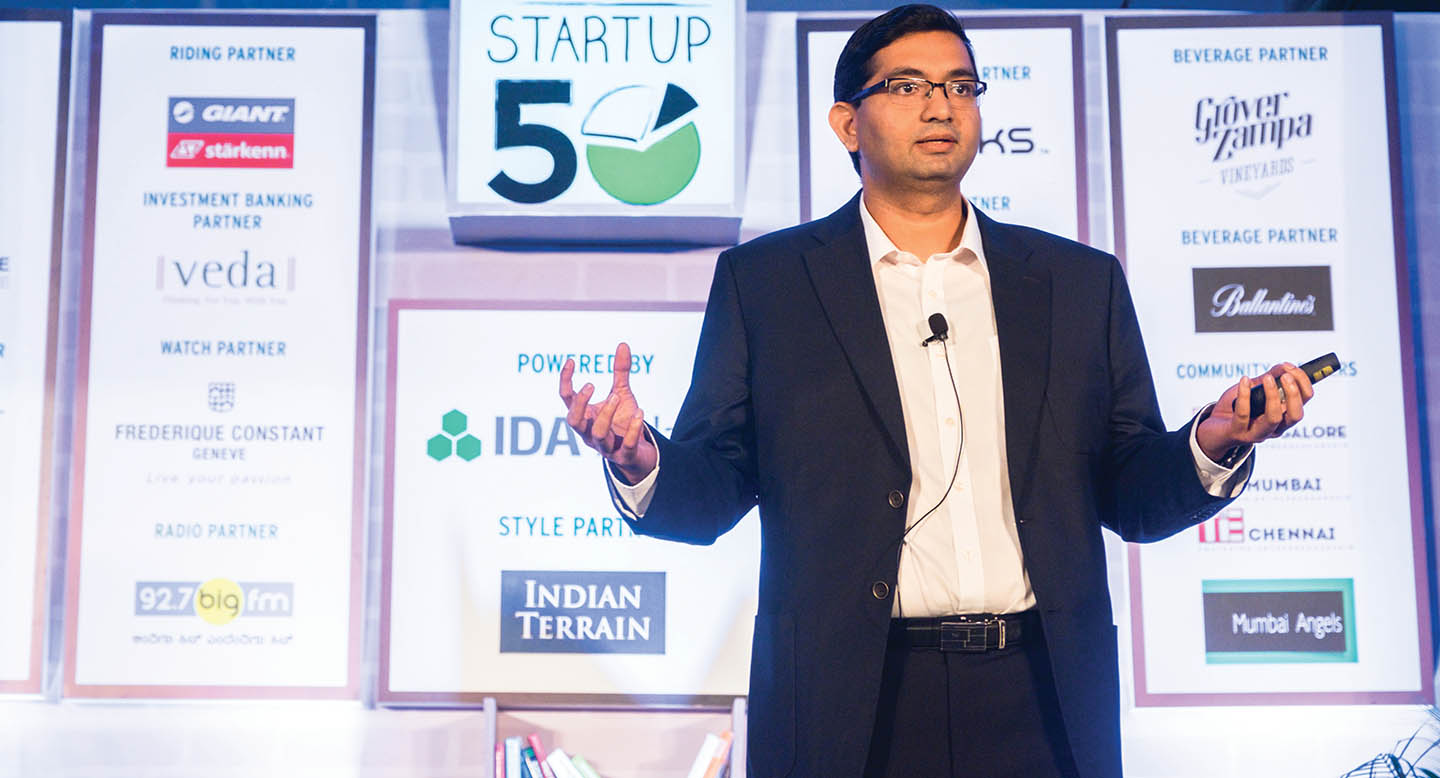In Startup50 2016: Badri Pillapakkam, the Director of Investments at Omidyar Network India, insists on building for the middle 60 per cent of the Indian population, which demands needs, not wants, and is utilitarian, not hedonistic
Madhumita Prabhakar
Some time ago, when the global impact investing firm, Omidyar Network, touched US $ 1billion in investments across for-profit and not-for-profit companies, Pierre Omidyar dialled down the celebrations and laid down a clear mission for its team; we have taken 10 years to achieve this. Yet, it’s not fast enough. We need to do more, and we need to do it in this lifetime.
It was this statement that got Badri Pillapakkam, its Director of Investments thinking; if we have to fulfil the dual objective of creating a market-based solution, while creating a massive impact, India would be a social innovation hub for it. Why? Because, we have abject poverty, great entrepreneurial spirit, a development-oriented Government and humongous market segments; a rather unique combination not many countries possess.
It was this too, that Pillapakkam elaborated on, when he delivered a talk at The Smart CEO Startup50 Conference this year.
Catering to the Real Indian
Pillapakkam elaborates on the social innovation potential in India with a quick glance into the Pyramid structure as he, and Omidyar sees it; the top five per cent comprises the vote bank population, which enjoys high financial returns and to which the Government does a good job of informing who they are and what they want. Then, there is the bottom 35 per cent which is hard to reach, with very high social impact potential. In between is the 60 per cent population that, if the startup community serves efficiently and frugally, can generate high financial returns and create massive impact at scale.
This is the segment Omidyar is most excited about. “This is the real Indian and we know very little about them. In fact, we want to invest in startups that focus on this particular segment. We call these businesses, the 60 per cent startups,” he cites.
According to him, this segment demands needs, not wants, and is utilitarian, not hedonistic. In other words, this is the population that lives in a rented home with 15 per cent of the income channelised towards it, is willing to pledge his/her earnings for a better future for the family and successive generations, wants quality education and healthcare, is savvy in adopting latest technology albeit limited to social media and entertainment apps, is not a micro-entrepreneur by choice and so forth. “Unfortunately, today, most of the tech and product startups in India focus on the top five per cent. As a result, the middle has been left with a void,” he opines.
Bringing Forth Local Innovation
Although India has seen a momentous digital and entrepreneurial wave in the past decade, it is still years behind China, feels Pillapakkam. Delving deeper into the past, he shares key lessons Omidyar has learnt from this time period, which it now banks on, to foster local innovation.
The digital evolution in the country, says he, can be divided into three phases. Phase one, where on the PC front, online travel ruled the roost and on mobile front, VAS did. “Here, we learnt that as many people came online, supply chain was broken and virtual products and services became easier to deliver. Think online travel and classifieds,” he notes and adds, “Another key lesson we learnt was that there is a low-cost method to acquiring customers, and also ensuring ease of transactions in this space. This is owing to the inroads telecom companies made.”
Then, Phase two, where online shopping became the order of the day and the focus was on convenience. This, of course, went hand in hand with the evolution of social networking, chat and video. “We realised through this phase that global technology products started understanding the real Indian more than most startups did,” he adds.
Phase three is what we are witnessing today; on-demand, hyperlocal delivery. “We learnt that the full stack model was solving the supply chain inefficiencies quite elegantly. Instant gratification became talk of the town; while this is great, it’s not viable,” he states.
So, how does Omidyar put to use these lessons into creating an ecosystem of local innovation?
“For us, local innovation comprises four components,” points out Pillapakkam. One, it is usually derived from an understanding of real Indian. Two, it is disruptive innovation, not a replica of an existing model. Three, it bears the ability to transform other sectors, and lastly, it operates on a frugal business model, be it for customer acquisition or delivery. “Most importantly, it is hard to replicate but has the potential to grow and scale exponentially,” he says.
The Omidyar Network
Across online, offline and multi-channel platforms, Pillapakkam shares several examples of Indian startups which have focussed on local innovation and succeeded at it. Take for example, NowFloats, the app and web-based platform for small merchants. On one hand, SMEs want to create an online presence for themselves, but are not equipped enough to do so. On the other, customers, the real Indians, want to go local in their search and spends, but global search engines like Google lack the ground knowledge to deliver accurate information on this front. To bridge this gap, Jasminder Singh Gulati, Ronak Kumar Samantray, Nitin Jain and Neeraj Sabharwal founded NowFloats, which helps SMEs create a website in under 13 minutes, and offers a host of features such as creating real time discounts auto discovery of content, seamless online transactions and such. Today, the company has 130,000 merchants across 100 cities and six million consumers registering searches every month.
Another example of local innovation is Indus OS. It was founded at a time when OEMs wanted to differentiated themselves from their Chinese counterparts and incorporate features which are very Indian. “When they started, 80 percent of mobile users were feature phone users and only 10 per cent could relate to the Internet which heavily relied on English as a mode of communication,” adds Pillapakkam. How did the company disrupt? It built a keyboard with 14 languages, the way we learn the language for the first time, created hybrid keyboards for the millennial generation, introduced features such as text to speech, transliteration, translation and more. It launched its OS by partnering with brands such as Micromax and Intex and now, it’s targeting global companies. “The result? It’s now the number two OS behind Android, has a 6.2 per cent market share and is adding about a million devices every month,” he cites.
While these are just a handful of examples, Pillapakkam concludes that these startups prove that we can build for the future, and make India the hub of social innovation. “A transformational idea, a deep understanding of real Indian, frugal business model and a big heart. That’s what we seek,” he states, on a concluding note.





